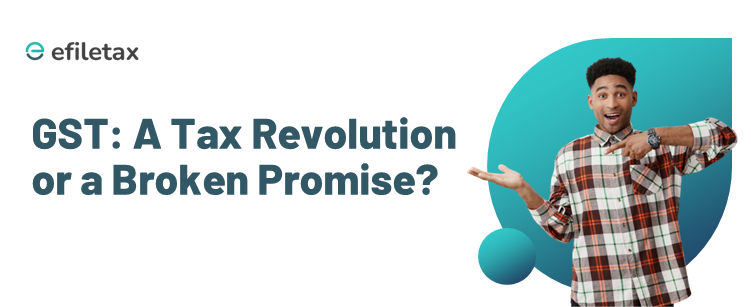
Is GST a Broken Promise?
As Benjamin Franklin once said, “In this world nothing can be said to be certain, except death and taxes.” When India introduced the Goods and Services Tax (GST), it was hailed as a transformative reform that would simplify the tax system, eliminate cascading levies, and create a unified national market. However, years later, GST has become a maze of inconsistencies, disproportionately affecting small businesses and lower-income consumers. With the Union Budget 2025 under discussion, there is an urgent need to assess whether GST has truly delivered on its promise or if it has become a regressive burden.
Is GST Widening Inequality?
India’s post-pandemic recovery has been K-shaped, benefiting the wealthy while leaving vulnerable sections struggling. A recent study highlights a stark reality: the bottom 50% of earners contribute 64.3% of total GST revenues, while the top 10% pay only 3.9%. Instead of being a redistributive tool, GST has deepened income inequality, as indirect taxation affects lower-income groups more than corporations.
By 2020, the income share of the bottom 50% had fallen to just 13% of the national income, and their wealth ownership was below 3%. The implications are alarming—nearly 70% of Indians struggle to afford a basic, nutritious diet, leading to 1.7 million diet-related deaths annually.
Inconsistent Taxation: The Popcorn Problem
One of GST’s biggest flaws is its inconsistent classification of goods and services, which often leads to bizarre tax structures. Consider the recent popcorn taxation debate:
- Unpacked, unlabelled salted popcorn – 5% GST
- Pre-packed variant – 12% GST
- Caramel popcorn – 18% GST (classified under sugar confectionery)
Such inconsistencies distort markets, create artificial price variations, and impose unnecessary compliance burdens on businesses. This is not an isolated case—similar disputes arose over paratha vs roti taxation and packaged vs unpackaged lassi. These inconsistencies have led to excessive litigation, consumer confusion, and increased costs.
Burden on Essential Goods and Services
GST was meant to simplify taxation, yet essential goods and services often face excessive levies. The recent 55th GST Council meeting saw an increase in GST on fortified rice, despite its role in combating malnutrition. Similarly, high GST rates on second-hand vehicles and health insurance premiums limit affordability and hinder economic mobility.
The hospitality sector has also suffered. Industry leaders advocate for GST reductions on hotel rooms and restaurants, arguing that lower tax rates would boost tourism, create jobs, and enhance global competitiveness. A streamlined GST system can drive demand and attract investments, particularly in high-growth industries like hospitality and healthcare.
Towards a Fairer, Simpler GST System
To align GST with its original vision of a “Good and Simple Tax”, key reforms are needed:
- Rationalisation of Tax Slabs: Countries like New Zealand and Singapore use simpler GST structures with fewer tax rates. India must move towards a streamlined system with minimal slabs to reduce complexity and compliance burdens.
- Targeted Tax Relief: Lowering GST on research and development investments and innovation-driven industries can boost economic growth and attract foreign investment.
- AI-Powered Compliance: Implementing AI-driven tax filing tools and chatbots for GST queries can reduce bureaucratic hurdles and improve compliance for small businesses.
- Encouraging Ethical Business Practices: Tax incentives for environmentally and socially responsible companies can drive sustainable growth.
- Reducing Compliance Burdens: A GST help desk and online training modules can aid businesses in understanding their tax obligations, promoting better compliance.
Conclusion: Can GST Be Fixed?
India’s GST system needs a fundamental shift from arbitrary classifications and excessive taxation to a transparent, rational, and growth-friendly framework. Instead of tweaking rates in isolation, policymakers should aim for fewer tax slabs, clearer guidelines, and global best practices to create a tax system that benefits all.
By focusing on inclusivity, simplification, and long-term growth, GST can reclaim its purpose as a transformative tax reform—one that supports businesses, empowers consumers, and strengthens the economy rather than disproportionately burdening the disadvantaged. The time for meaningful GST reform is now.